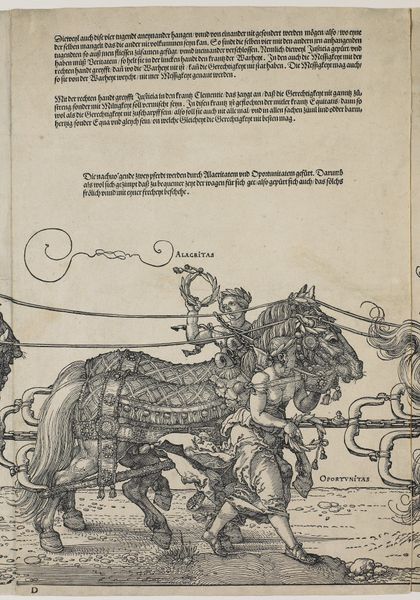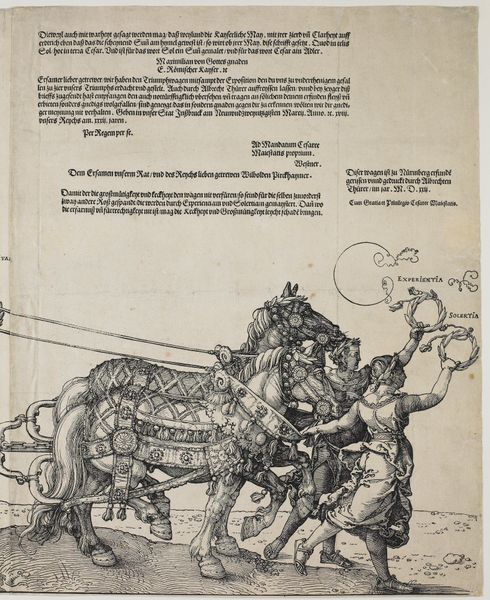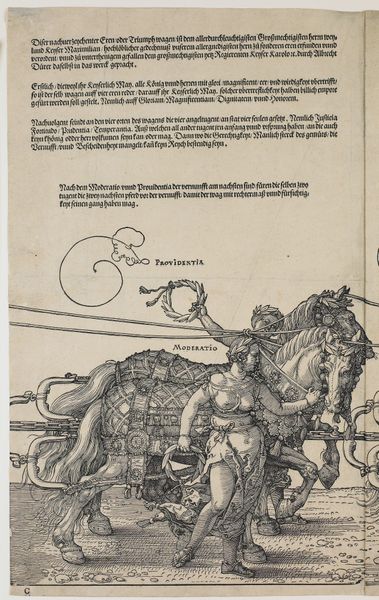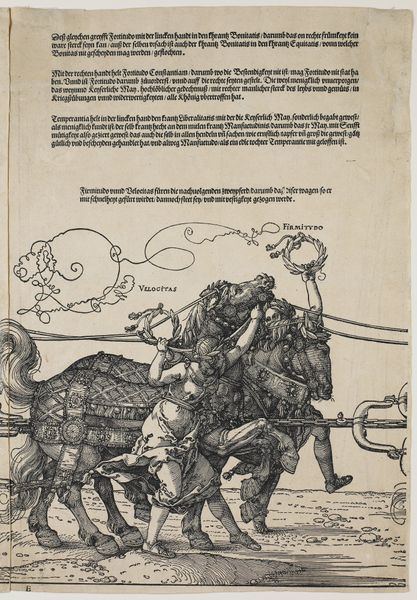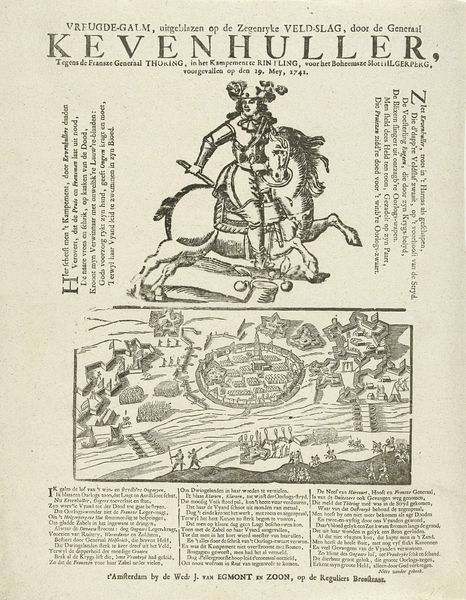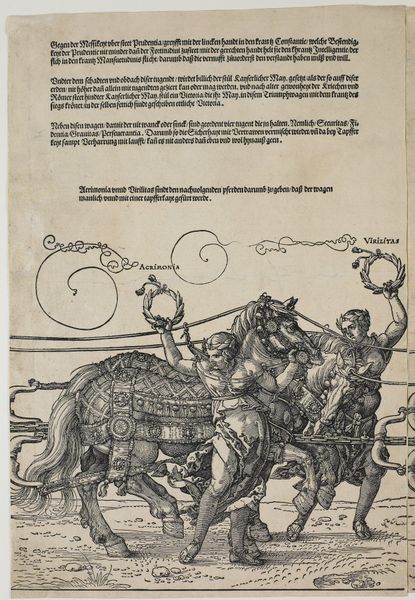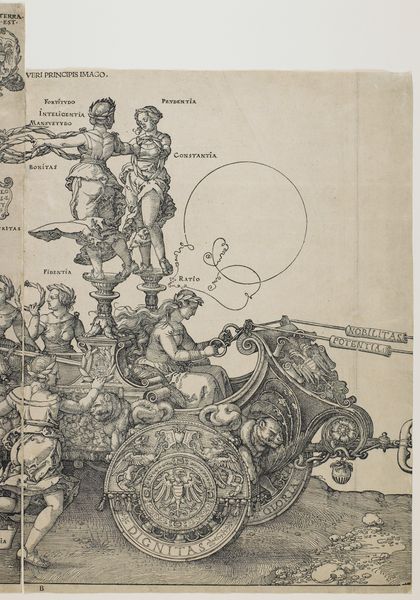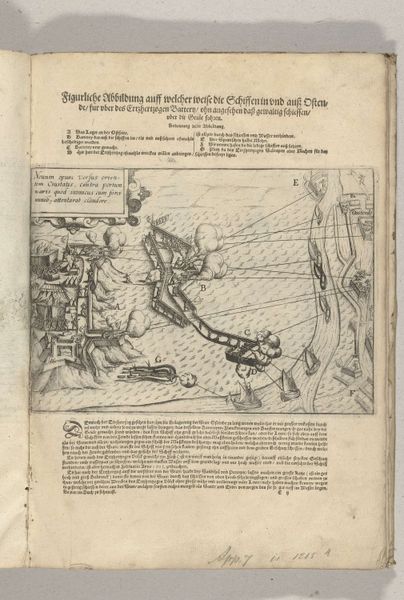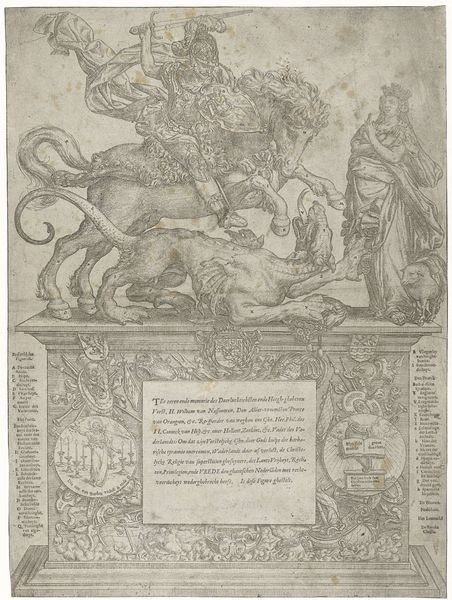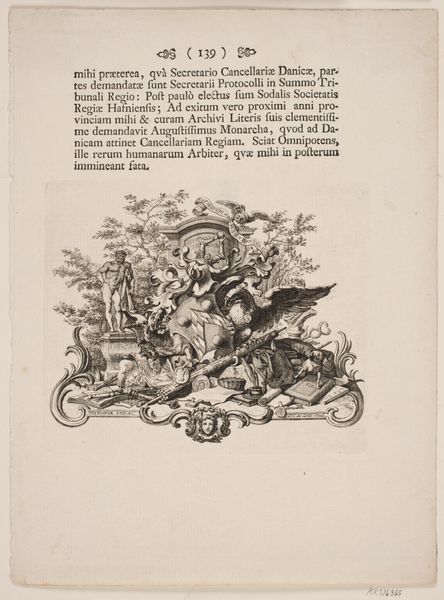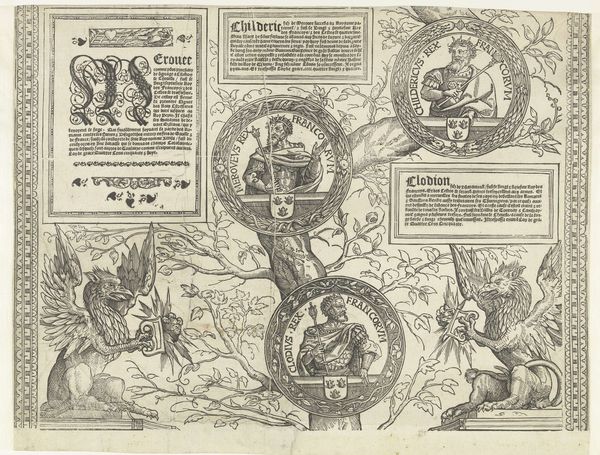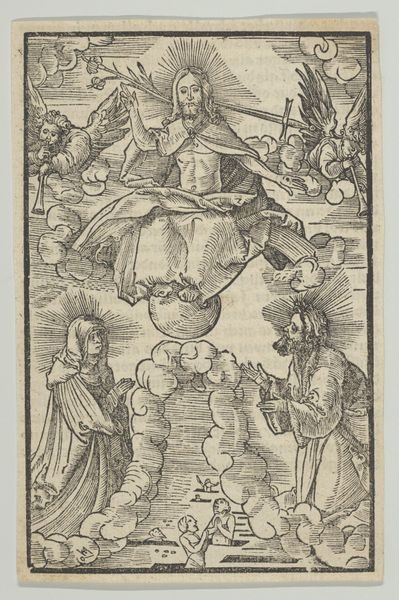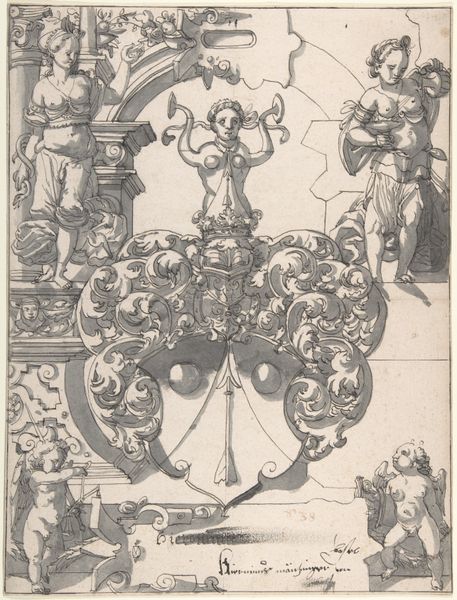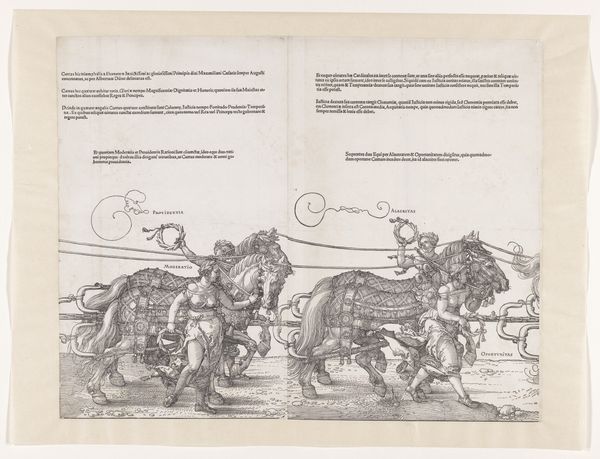
Large Triumphal Carriage of Maximilian I c. 1518 - 1522
0:00
0:00
Dimensions: 16 x 18 15/16 in. (40.64 x 48.1 cm) (sheet)
Copyright: Public Domain
Curator: Looking at this incredibly detailed woodcut, "Large Triumphal Carriage of Maximilian I," made between 1518 and 1522 by Albrecht Durer, housed at the Minneapolis Institute of Art... I’m struck by its density. It feels both grand and intensely labored, don't you think? Editor: Absolutely. There’s a nervous energy almost buzzing from the print, wouldn’t you say? The jostling of bodies, the harnessing of these very muscular horses… It speaks to a particular mode of Renaissance propaganda, a way to visualise power through exertion. Curator: Propaganda indeed! Dürer was commissioned by Emperor Maximilian I himself for this massive project. It's essentially a glorification of the Habsburg dynasty, wasn’t it, placing Maximilian at the center of a symbolic procession. Editor: Precisely. This image isn’t just a record, it's an articulation of imperial ambition. Note the figures adorning the chariot - Virtues personified like Ratio and Magnanimitas pulling him forth. But who decides who embodies these virtues and how this contributes to a singular narrative of heroism? Curator: Well, these figures were more than window dressing, weren't they? Durer carefully crafted the entire composition with its intricate network of symbolic meaning to illustrate Maximillian’s perceived strength, justice and piety. It’s such an elaborate, dare I say theatrical, performance! Editor: Precisely – a *performance*. It masks as much as it reveals, it elides what might make it appear less divine or untouchable. Consider that these kinds of triumphal processions were exclusionary by nature; deciding who has a place in the frame of greatness and who does not. Curator: It also leaves you wondering about the actual impact of such a complex and relatively niche artwork. I mean, was the message truly received, beyond a small circle of elites? What happens when you have to decipher a puzzle to appreciate power? Editor: Right. Power risks rendering itself unrecognisable as itself – if no-one quite understands. On the other hand, that complexity gives it staying power as a piece of art, centuries later, doesn't it? We are still puzzling out Dürer’s work! Curator: A total success in that respect, because as historical source material it’s pretty questionable, but as a source for imagination it is endlessly rich! Editor: Yes, ultimately a space where questions of gender, power and access are laid bare, for those who choose to ask.
Comments
minneapolisinstituteofart almost 2 years ago
⋮
Dürer's magnificent allegorical design for the Imperial chariot was originally commissioned in 1512 as the centerpiece of Maximilian's Triumphal Procession, one of the most ambitious projects in the history of the graphic arts. Dürer's elaborately embellished carriage was intended to form the climax of the entire procession, showering the Emperor in personal glory, while underscoring his dynastic power. The final fully elaborated drawing for the woodcut was completed only in 1518, and the woodcut remained unfinished at the time of the Emperor's death in 1519. In 1522, Dürer published the Triumphal Chariot himself as an independent woodcut dedicated to the Emperors Maximilian and Charles V. The print differs from the original design in the addition of printed text explaining the various symbolism of the work and a short history of its production. Dürer also omitted the Emperor's family from the composition, for after Maximilian's death it seemed fitting to interpret his "triumph," not as a dynastic manifesto but as a personal apotheosis.
Join the conversation
Join millions of artists and users on Artera today and experience the ultimate creative platform.
